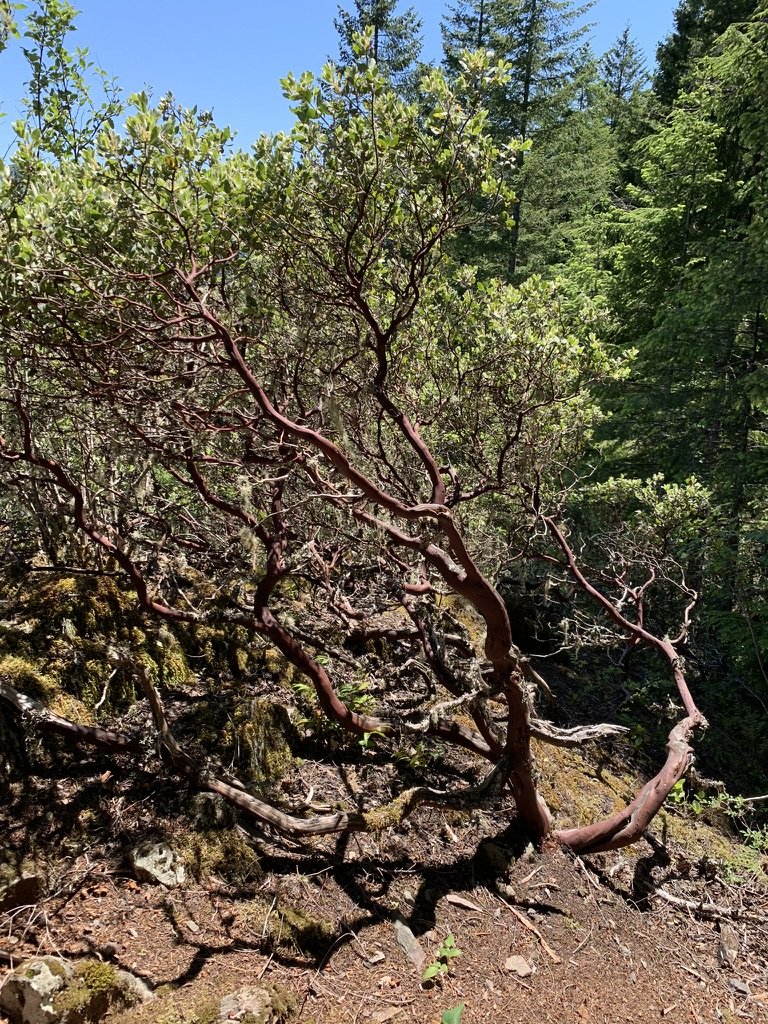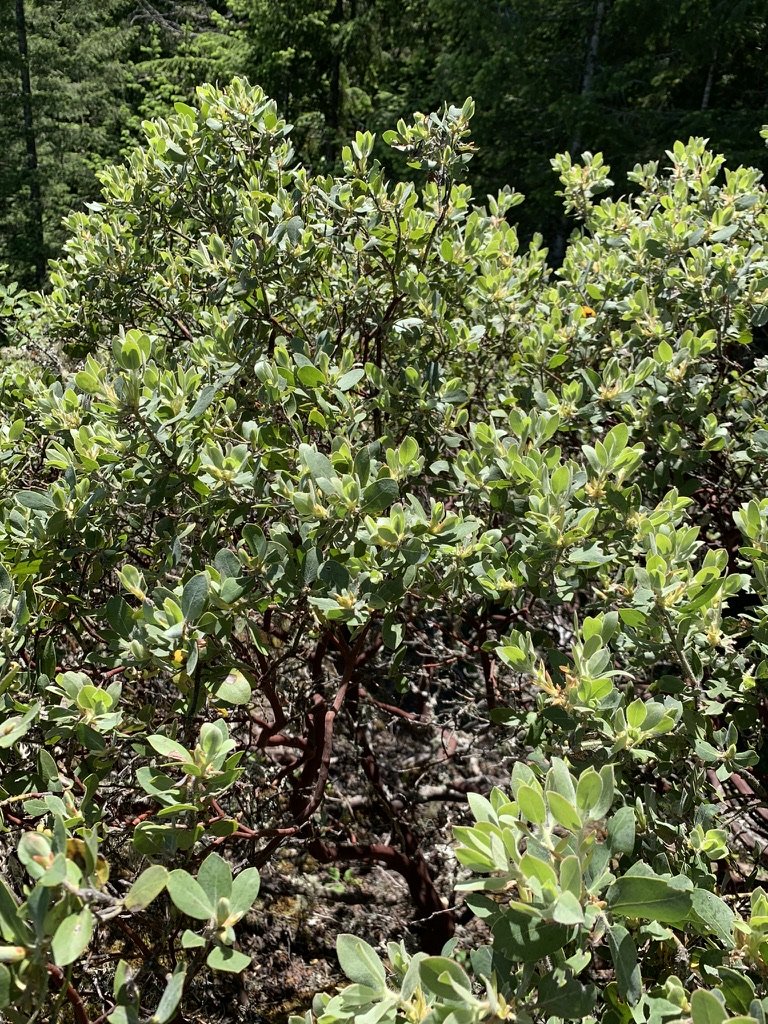Hairy Manzanita (Arctostaphylos columbiana)
The hairy manzanita is a woody perennial shrub that occurs in northern California, Oregon, Washington, and parts of southern BC. In Oregon, it grows extensively along the coastal range, east of the Columbia gorge, and in the Cascade foothills. It is one of three common species of manzanita that occur in the Willamette valley along with A. uva-ursi and A. patula, however there are 11 distinct species of manzanita that grow in the state of Oregon, the others mainly in the southwest region. Manzanitas are a seral, secondary successional species, a term that describes their ecological role after a disturbance. Shortly after a fire, logging, or landslide event, plant communities will begin to reestablish themselves in a series of successional stages. During the first two years, herbaceous plants like grasses, heaths, and other annuals like fireweed begin to colonize the area. In 3-5 years woody shrubs, like manzanitas, move in and establish themselves. Finally in 5-10 years trees grow tall and move the ecosystem toward a climax community. In secondary succession, manzanitas thrive and provide several ecological services for animal and plant communities. They are buzz pollinated by bees who vibrate at specific frequencies to trigger the release of pollen from its flower, so cool! Birds like to eat and spread their seeds, which are able to stay dormant in the soil for years until a disturbance occurs. Leaves are simple, alternate, evergreen, broadleaved, glaborous, grey-green, and are attached to short hairy petiole. Flowers are urn shaped, bright white to pale pink in spring, The hairy manzanita once flourished in the Willamette valley, but due to urban sprawl, its population has drastically decreased, so go out and plant some!





